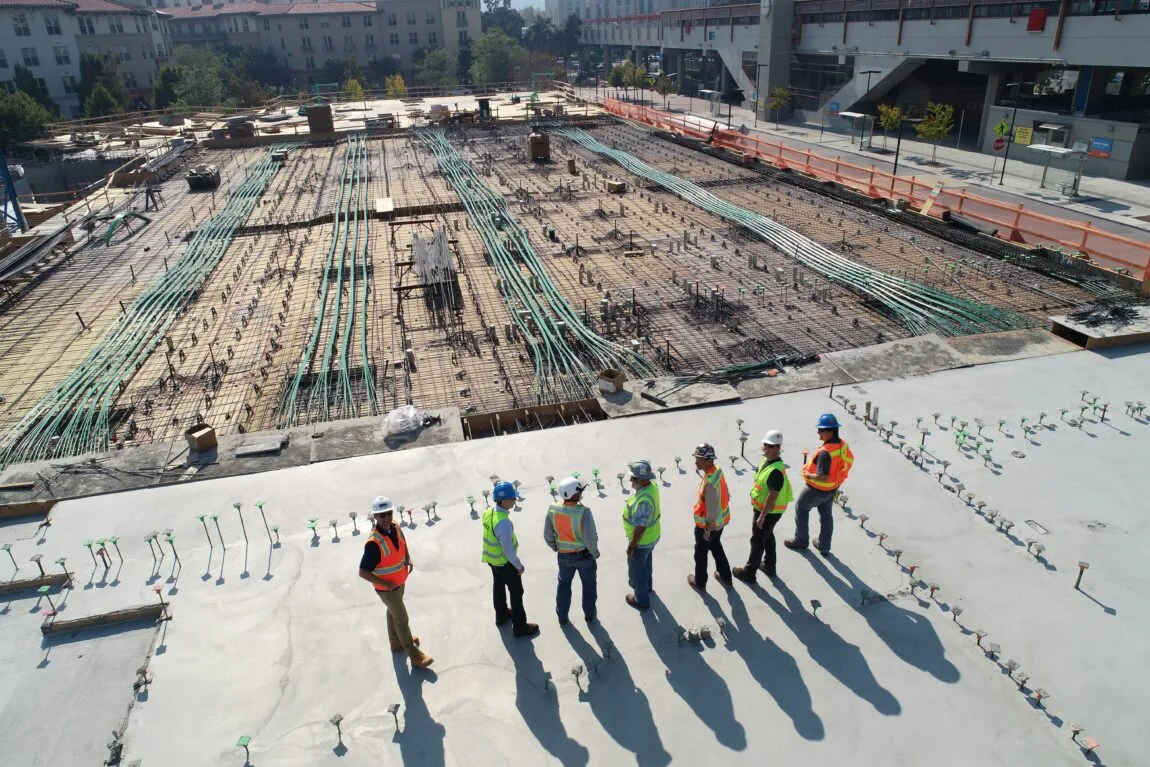The success of any project hinges on clear communication and well-defined expectations, especially when it comes to finances. But what happens when the project scope is still evolving, or unforeseen circumstances might arise? This is where Time and Materials contracts come into play.
This comprehensive guide dives deep into the world of T&M contracts, untangling their intricacies and equipping you with the knowledge you need to make informed decisions. Whether you’re a contractor seeking efficient project management or a client embarking on a creative endeavor, understanding T&M contracts will empower you to navigate project costs and timeline with clarity and confidence.
What is a Time and Materials Contract?
In project work, traditional contracts often involve a fixed price for the entire job. However, when the scope of work is uncertain or changes are likely to occur mid-project, a different approach is necessary.
A T&M contract is a flexible agreement between a client and a contractor. Unlike a fixed-price contract, it doesn’t set a single upfront cost for the entire project. Instead, it outlines the project’s general scope and establishes two key components for payment:
- Hourly rates: The contractor specifies its hourly rate for labor. This rate typically incorporates wages, overhead and profit.
- Material costs: The contract also details how material costs will be handled. This might involve the client directly purchasing materials, or the contractor acquiring them with a markup added to the final cost.
In some T&M contracts, a ‘not-to-exceed’ clause may be included. This acts as a safety net for the client, setting a maximum project cost to prevent runaway expenses.
T&M contracts are ideal for situations where the project details are still evolving, or unexpected changes might arise during the course of work. They offer flexibility for both parties, as the final cost reflects the actual time spent and materials used.
This type of contract is more commonly used as a construction contract but is also used by software companies and other businesses.

How Does a Time and Materials Contract Work?
Unlike a fixed-price contract with a single upfront cost, a T&M contract operates in stages:
- Project definition
Client and contractor collaborate to define the project’s overall goal and desired outcome. While the specifics might not be entirely finalized, this initial agreement sets the project’s direction.
- Cost structure
The agreement outlines how project costs will be tracked and reimbursed. This includes:
- Time tracking: The contractor implements a system for accurately recording labor hours spent on the project.
- Material procurement: Materials are obtained and paid for either by the client or the contractor, as specified in the contract.
- Initial estimate (optional)
Though T&M contracts are based on actual usage, it’s common to establish an initial estimate using the known scope of work. This provides a general idea of potential costs for the client.
- ‘Not-to-exceed’ clause (optional)
For added security, some T&M contracts include a maximum project cost clause. This acts as a safeguard against unexpected expenses exceeding a predetermined amount.
- Ongoing communication
T&M contracts often necessitate ongoing communication between client and contractor. As the project progresses, and the scope or materials needs might change, the contractor can provide updated cost estimates. This transparency helps manage client expectations and ensures both parties are on the same page.
This flexible approach allows for adjustments throughout the project. The final cost reflects the actual hours worked and materials used, adapting to changes that may arise during the course of work.
Due to the flexibility of this agreement type, it is recommended to utilize an AI software to review the construction contract and further enhance the accuracy and efficiency of this process. AI tools can quickly analyze contract terms, identify potential risks, and ensure compliance with relevant regulations, thereby helping both parties avoid misunderstandings and legal issues.
Advantages and Disadvantages of Time and Materials Contracts
T&M contracts offer flexibility for both clients and contractors, but they also come with drawbacks. Let’s explore the pros and cons for each party involved:
Advantages for Clients
- Adaptability
A T&M contract allows adjustments to the project scope as needed without a complex renegotiation process. This is ideal for situations where the project details are still evolving.
- Clarity
Clients receive ongoing updates on labor hours and material costs, enabling them to monitor project progress and budget closely.
- Speed
Given the lower financial risk for contractors compared to other contract types, once the rates and timeline are agreed upon the contractors are typically more confident and ready to begin work promptly.
- Potential cost savings
If the project is completed efficiently, the final cost may be lower than a fixed-price contract, especially if the initial scope was overestimated.
Disadvantages for Clients
- Uncertain budget
Without a fixed price, clients face greater financial risk as the final cost can fluctuate depending on the actual time and materials used.
- Increased management needs
T&M contracts require close monitoring of time and material expenses to ensure they stay within budget.
- Reliance on trust
The success of a T&M contract hinges on a trusting relationship with the contractor. Clients may worry about potential inefficiencies that inflate costs.
Advantages for Contractors
- Reduced risk
Contractors are compensated for all time spent and materials used, minimizing the financial risk associated with unforeseen circumstances.
- Ensuring profit margin
With the right calculation of markup rates, contractors can ensure profitability even if the project takes longer than anticipated.
- Simpler bidding process
T&M contracts often require less upfront preparation compared to fixed-price bids, streamlining the bidding process.
Disadvantages for Contractors
- Cash flow challenges
Contractors may face cash flow issues, as they cover upfront labor and material costs before receiving reimbursement.
- Efficiency incentives
Since compensation is based on hours worked, there may be less incentive for contractors to prioritize efficiency.
- Client expectations
Providing accurate cost estimates can be difficult in the absence of a well-defined scope, potentially leading to client dissatisfaction.
You may be interested in:
Guaranteed Maximum Price (GMP) Contracts in Construction
A T&M Contract Example: Kitchen Renovation
Project: Kitchen renovation at 123 Main Street
Client: Ms. Jane Doe
Contractor: Hammer Construction (Contractor contact: John Smith, project manager)
Project scope
- Demolish existing cabinets, countertops, and flooring in the kitchen.
- Install new cabinets, countertops, and flooring as per client selections.
- Replace existing sink and faucet with new fixtures chosen by the client.
- Update backsplash tile based on client selection.
- Paint kitchen walls and ceiling (color chosen by client).
- Install new light fixtures over the sink and in the center of the kitchen (client to provide fixtures).
Time and materials
- Hammer Construction will provide hourly rates for its crew members (carpenters, electricians, plumbers, etc.) with a breakdown of base wages, overhead, and profit margin.
- Material costs will include all building materials (cabinets, countertops, flooring, tile, paint, etc.), as well as any permits or disposal fees associated with the project.
- A detailed breakdown of hours worked and materials used will be included in monthly invoices submitted to Ms. Doe.
Budget and payment schedule
- An initial budget estimate of $20,000 has been established based on the proposed scope of work.
- Ms. Doe will make a 50% down payment upon contract signing. The remaining balance will be due in progress payments tied to specific project milestones (e.g., completion of demolition, installation of cabinets).
- A ‘not-to-exceed’ clause has been included, limiting the total project cost to $25,000. Any additional expenses exceeding this amount will require written approval from Ms. Doe before proceeding.
Communication and change orders
- Weekly progress meetings will be held on-site to discuss project progress and address any questions or concerns.
- Both parties agree to maintain clear communication throughout the project.
- Any changes to the project scope or materials (e.g., upgrading appliances, adding additional lighting) will be documented in a formal change order, outlining the impact on cost and timeline.
Completion and acceptance
- Upon completion of the renovation, Hammer Construction will conduct a final walkthrough with Ms. Doe to ensure all work meets her satisfaction.
- Once Ms. Doe approves the final project, a final invoice will be submitted.
This T&M contract allows for flexibility as unforeseen issues might arise during demolition or Ms. Doe may decide to make adjustments to the materials selection. The final cost will reflect the actual time and materials used in completing the renovation.







By entering your email, you agree to our Terms & Conditions and Privacy Policy.